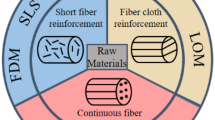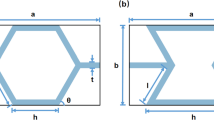Abstract
High-performance composites are generally fabricated with continuous fibre and fabric reinforcements embedded in a thermosetting resin. Using thermoplastic matrices, there are substantial reductions in forming time and labour. More recently, the availability of all-polypropylene composites, achieved using the same thermoplastic polymer for both the fibre and the matrix phase, is also increasing because of their recyclability. In this perspective, the work aims to study the mechanical behaviour of a new fully thermoplastic composite, first showing the results of an experimental campaign for the mechanical characterization of the material properties, then examining the behaviour of structures made of such material under axial loading to evaluate their energy absorption capability. The second part of this work is divided into two steps. In the first step, crush tests on simple tubes were performed. In the second step, the behaviour of a specific impact attenuator for a Formula SAE racing car was analysed. Using the same geometry, different material solutions were tested. Beside traditional thermosetting composite structure, a new fully thermoplastic composite and a hybrid solution were used taking into account various feasibility problems in the manufacturing phases. Even if the thermoplastic attenuator does not exhibit the same absorption capability of the thermosetting solutions, an interesting crushing mechanism was noticed: no more brittle failure with formation of debris, but a ductile progression with a load distribution very close to an ideal absorber.










Similar content being viewed by others
References
Alcock B (2004) Single polymer composites based on polypropylene: processing and properties. Queen Mary, University of London, London
Avalle M, Belingardi G, Scattina A (2013) Numerical and experimental investigation of a lightweight bonnet for pedestrian safety. Int J Crashworthiness 18(1):29–39
Belingardi G, Chiandussi G, Gobetto E, Scattina A (2010) Bonnet weight reduction and VRU protection: design proposals implementing non-conventional materials. Int J Automot Technol 11(6):831–842
Boria S, Obradovic J, Belingardi G (2015) Experimental and numerical investigations of the impact behavior of composite frontal crash structures. Compo Part B 79:20–27
Boria S, Scattina A, Belingardi G (2016) Experimental evaluation of a fully recyclable thermoplastic composite. Compos Struct 140:21–35
Directive 2000/53/EC of the European Parliament and of the Council of 18 September 2000 on end-of life vehicles. Official Journal of the European Communities (21 October 2000), Brussels, Belgium
European Commission (2014) The European Union explained: transport. European Commission, Luxembourg
Hoffenson S (2012) Safety considerations in optimal automotive vehicle design, PhD Dissertation. University of Michigan, Ann Arbor
Mamalis AG, Manolakos DE, Demosthenous GA, Ioannidis MB (1998) Crashworthiness of composite thin-walled structural components. Technomic Publishing Co, Lancaster, p 269
Mo F, Arnoux PJ, Avalle M, Scattina A, Semino E, Masson C (2015) Incidences of various passenger vehicle front-end designs on pedestrian lower limb injuries. Int J Crashworthiness 20(4):337–347
Muzzy JD, Kays AO (1984) Thermoplastic vs. thermosetting structural composites. Polym Compos 5(3):169–172
Obradovic J, Boria S, Belingardi G (2012) Lightweight design and crash analysis of composite frontal impact energy absorbing structures. Compos Struct 94(2):423–430
Van Moorleghem (2016) Welding of thermoplastic to thermoset composites through a thermoplastic interlayer Msc Thesis. Technische Universiteit Delft, Delft
Author information
Authors and Affiliations
Corresponding author
Additional information
Publisher’s note
Springer Nature remains neutral with regard to jurisdictional claims in published maps and institutional affiliations.
Rights and permissions
About this article
Cite this article
Boria, S., Belingardi, G. & Scattina, A. Thermosetting and thermoplastic impact attenuator under axial loading. Multiscale and Multidiscip. Model. Exp. and Des. 2, 129–139 (2019). https://doi.org/10.1007/s41939-018-0037-5
Received:
Accepted:
Published:
Issue Date:
DOI: https://doi.org/10.1007/s41939-018-0037-5




